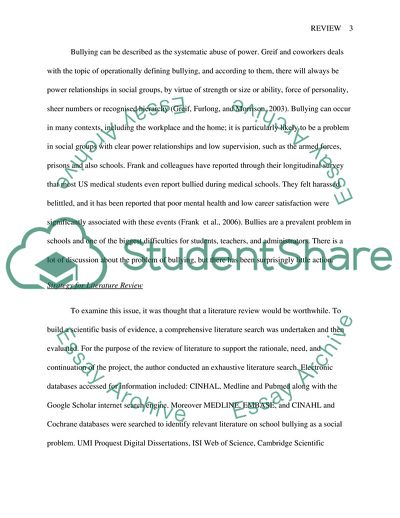Cite this document
(Bullying in Schools Research Proposal Example | Topics and Well Written Essays - 3444 words, n.d.)
Bullying in Schools Research Proposal Example | Topics and Well Written Essays - 3444 words. Retrieved from https://studentshare.org/psychology/1717733-section-ii-literature-review
Bullying in Schools Research Proposal Example | Topics and Well Written Essays - 3444 words. Retrieved from https://studentshare.org/psychology/1717733-section-ii-literature-review
(Bullying in Schools Research Proposal Example | Topics and Well Written Essays - 3444 Words)
Bullying in Schools Research Proposal Example | Topics and Well Written Essays - 3444 Words. https://studentshare.org/psychology/1717733-section-ii-literature-review.
Bullying in Schools Research Proposal Example | Topics and Well Written Essays - 3444 Words. https://studentshare.org/psychology/1717733-section-ii-literature-review.
“Bullying in Schools Research Proposal Example | Topics and Well Written Essays - 3444 Words”, n.d. https://studentshare.org/psychology/1717733-section-ii-literature-review.


